During the scorching summer, in the Jianyang Tashan Industrial Park, the Fuzhou Tenmoku ceramics factory is firing a row of kilns. Wu Zhoufu, who is over 40 years old, is adding oil and firewood to the kilns. The high temperature in the kiln room is almost unbearable, and sweat drips from his face, making his hard work self-evident. He smiles and says that the amount and timing of adding oil and firewood are very particular, and if not done properly, it can affect the quality of the Tenmoku.
The famous Tenmoku, which is renowned throughout the country, is produced in Jian Kiln. "Jian Kiln" is one of China's famous ancient kilns, and its ruins are located in Houjing and Chizhong villages in Shuiji Town. Its products were already famous during the Song Dynasty. Due to the popularity of the trend of tea competitions at that time, in addition to providing high-quality tea, the most suitable tea ware for tea competitions was also needed, and Tenmoku was the best tea ware for tea competitions at that time.
In 1975, Wu Zhoufu was born in Houjing village, where he was exposed to the culture of Tenmoku from a young age. After graduating from junior high school in 1993, he returned to his hometown to work in agriculture. Wu Zhoufu noticed that many people from other places came to his hometown's old kiln site to buy old black Tenmoku. One day, he saw someone bowing deeply and reverently on the old kiln site, lovingly holding the fragments of the ancient Tenmoku. The young and intelligent Wu Zhoufu thought to himself, "These old black Tenmoku must be good things, or why would so many people come to this remote and poor village?" Perhaps it was his love for his hometown, so he paid more attention to the old black Tenmoku that he had not noticed before. Slowly, he fell in love with Tenmoku, began collecting and studying it, and his interest grew day by day, from understanding to passion and obsession.
In 2005, Wu Zhoufu, who had earned his first bucket of gold, was not satisfied with just collecting Tenmoku, he wanted to make it himself. Years of experience in Tenmoku collection and research had given him a unique understanding of the body, glaze color, spots, and shape of Tenmoku. He rented a venue, bought equipment and raw materials, and visited and learned from masters everywhere. He tried to fire Tenmoku, failed, tried again, failed again, and kept going, repeating the process until he became more resilient. Wu Zhoufu admitted that firing Tenmoku requires not being afraid of failure, and that every successful Tenmoku maker has tried and tested repeatedly. Only by being persistent and exploratory can one achieve success. In November 2014, he successfully fired top-quality blue and silver oil drips, and in November 2015, his work "Blue Oil Drip Teacup" won the Golden Award of the Craftsmanship Table of the China (Beijing) International Innovation Product Trade Fair.
Yao Bian is a rare treasure in Tenmoku. The three existing Yao Bian Tenmoku are all rare treasures passed down from the Southern Song Dynasty and are currently held in collections in Japan. They are known as the "universe in a bowl". For hundreds of years, the Yao Bian Tenmoku has been revered by the Japanese as a sacred object in the tea ceremony and has been carefully preserved.
Wu Zhoufu said that Yao Bian is the top treasure in Tenmoku, and every Tenmoku maker dreams of making one. A few years ago, he discovered by chance that the large spotted oil drip that he had fired had a blue halo, similar to that of the Yao Bian Tenmoku. He then tried to fire Tenmoku imitating Yao Bian in this direction.
"Yao Bian" refers to the colorful light that emerges from the thin film on the surface of successfully fired black porcelain under light, blending colors such as yellow, blue, green, and purple. However, to achieve the rainbow-like effect on the surface of the finished porcelain, a very thin crystal film of iron must be formed during the firing process. Unfortunately, this porcelain-making technique was lost after the Southern Song Dynasty fell.
Wu Zhoufu told the interviewer that in the process of developing Yao Bian, every opportunity was very accidental. Sometimes, after achieving some success, the works produced would not meet the original standards after a period of time. At this point, he would repeatedly think about what went wrong, such as kiln temperature, clay, glaze ratio, firing methods, and so on. Yao Bian is indeed a treasure that is hard to come by, and it relies on fate and luck. However, one must try more, experiment more, and fire more, not be afraid of failure, not be discouraged, as long as the kiln fire is not extinguished, there is always hope for success.
The Yao Bian Tenmoku reproduced by Wu Zhoufu already has the charm of the Yao Bian from the Song Dynasty. Under the sunlight, one can vaguely see a blue sky with stars shining, similar to the Yao Bian Tenmoku. It is unique in the Tenmoku industry and deeply appreciated by professionals and collectors of Tenmoku.
Wu Zhoufu often says that all current Tenmoku makers are exploring the ancient art of Song Dynasty Tenmoku. As a maker, one must have the heart of a craftsman, be able to endure loneliness, practice diligently, avoid comparison and impatience, and learn and improve through persistence.
Success is won through hard work and sweat. In September of last year, Wu Zhoufu's work "Bukou Yao Bian Oil Drip Teacup" won the Gold Award for Outstanding Works at the 9th China (Hefei) International Cultural Expo and China Craft and Art Boutique Expo. In order to mark his Tenmoku works, Wu Zhoufu stamps his works with the characters "Fu" or "Fulao" at the bottom. Currently, he has specialty stores in Tianjin, Guangzhou, and Beijing.


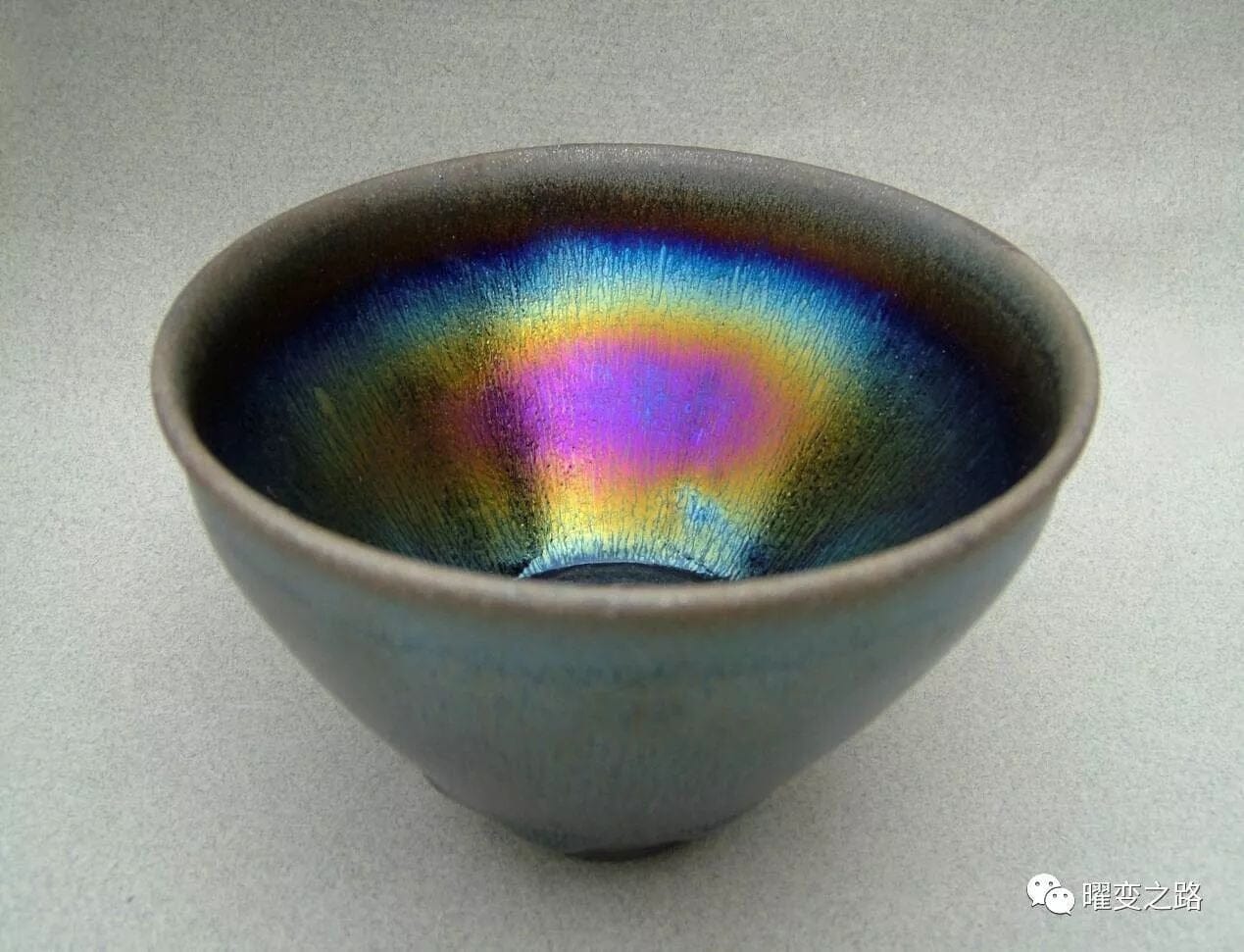
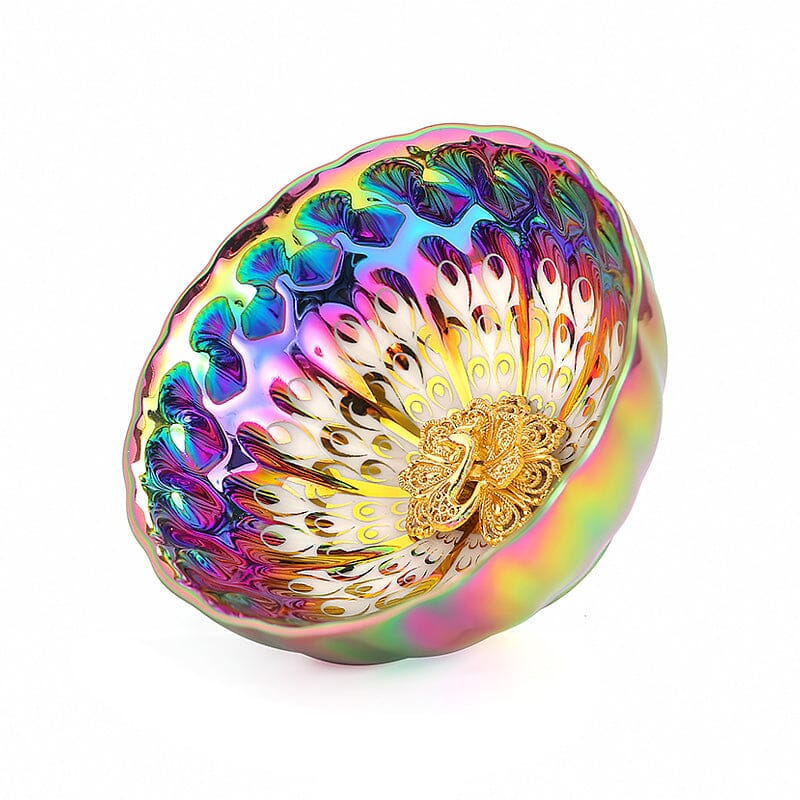
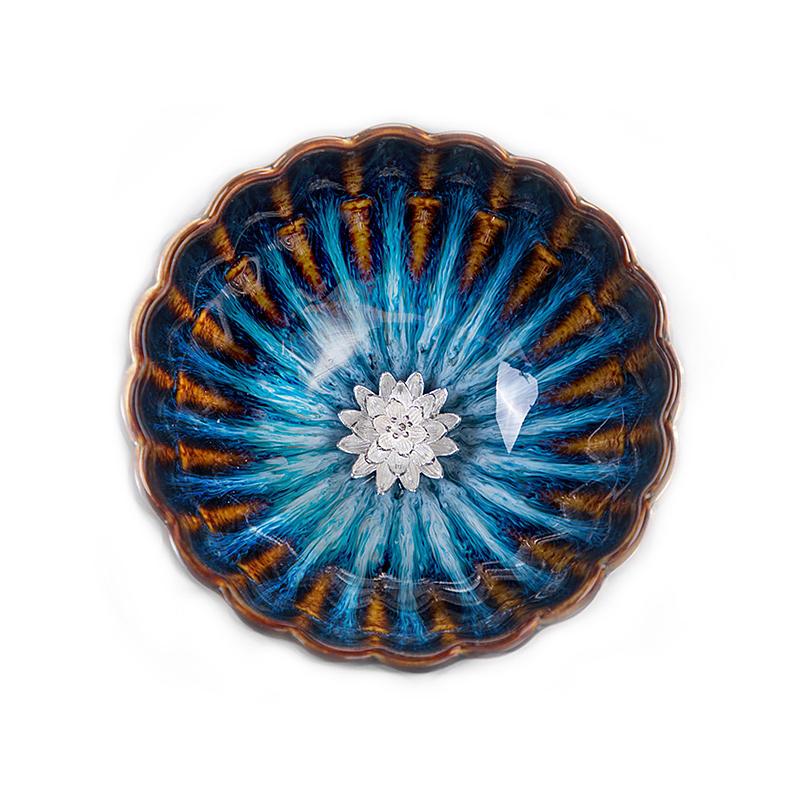
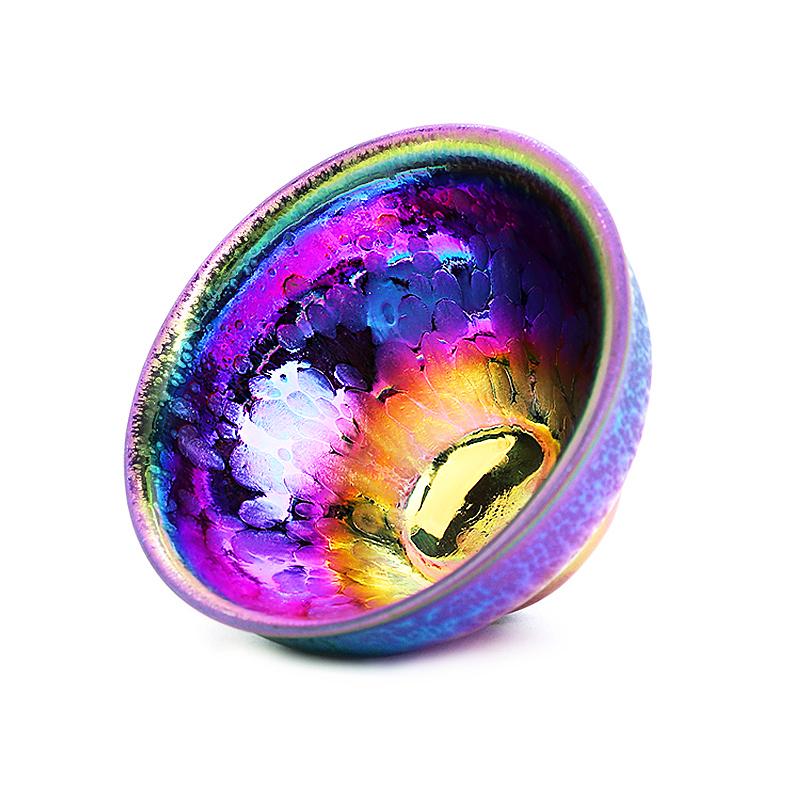
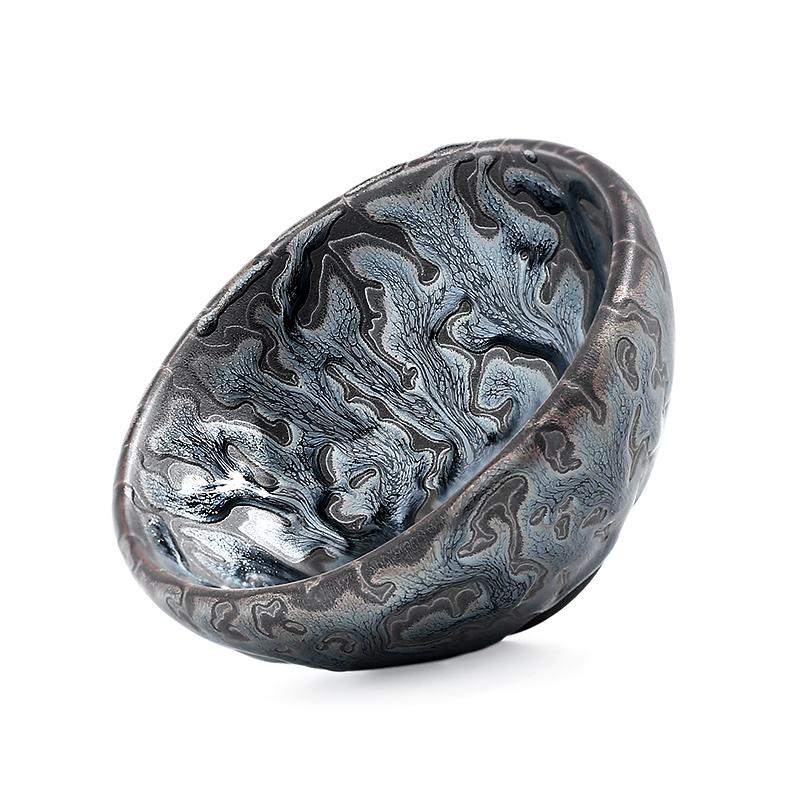
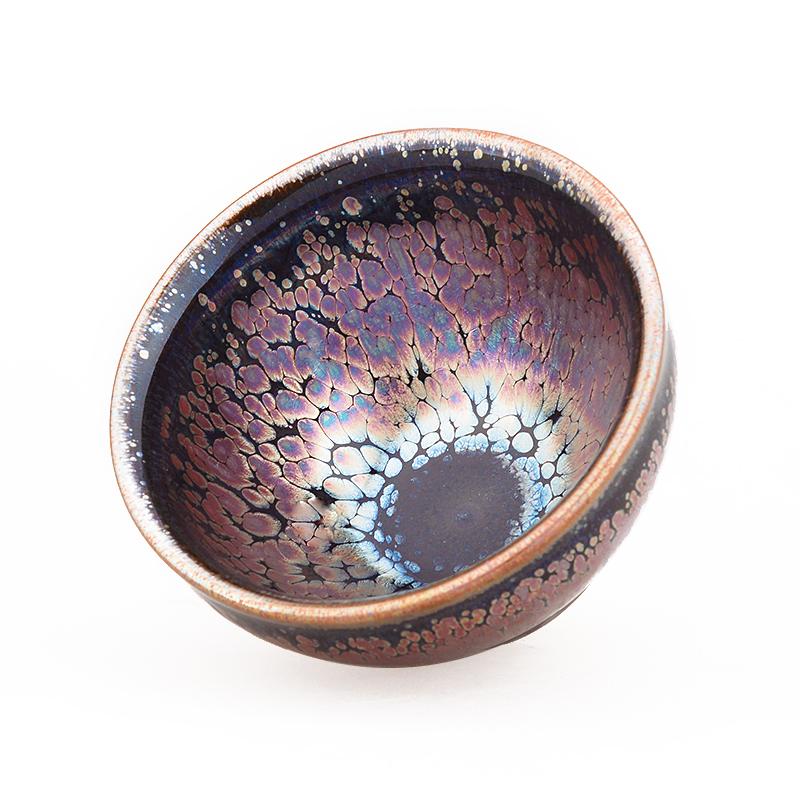
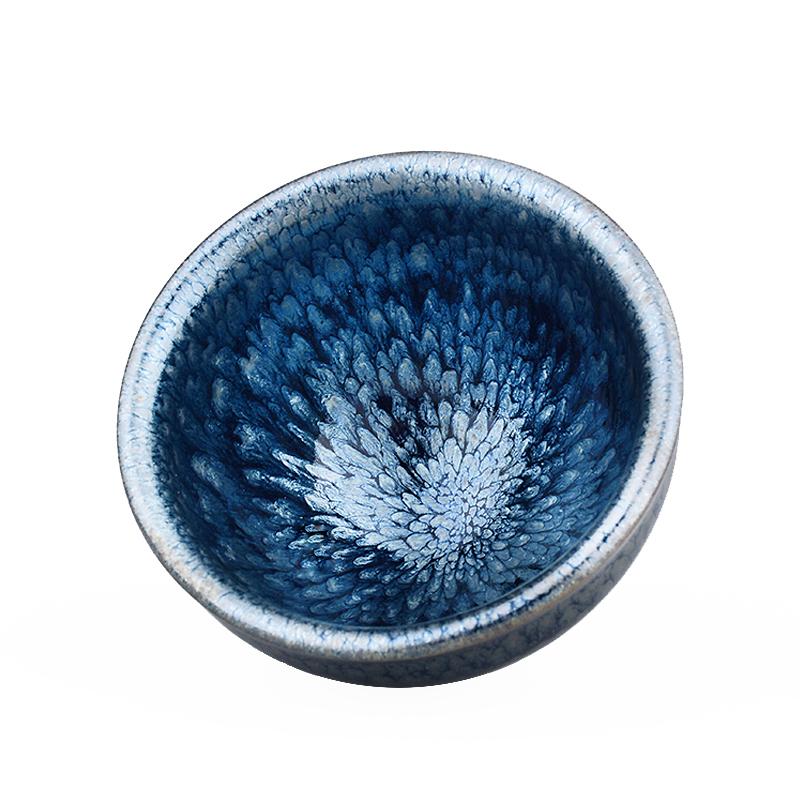
Share:
5 Deadly Sins of Tenmoku Care: Is Your Vase Slowly Dying?
The six incredible aspects of Tenmoku